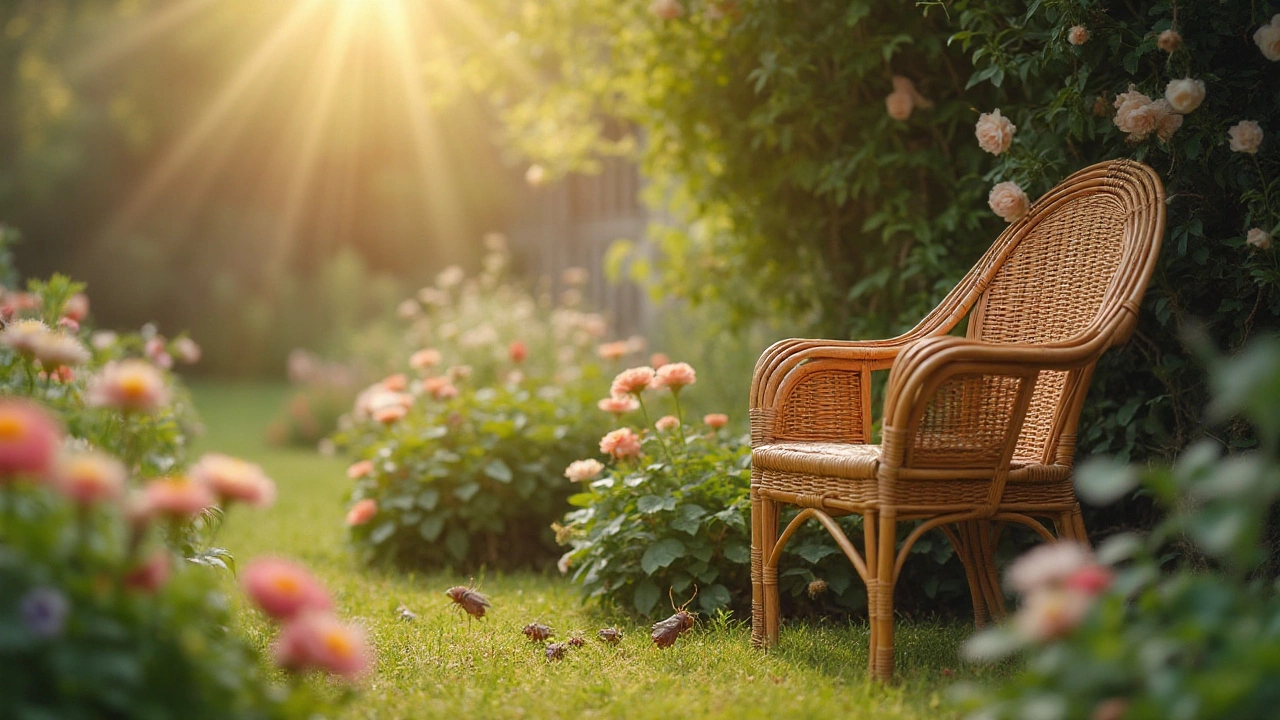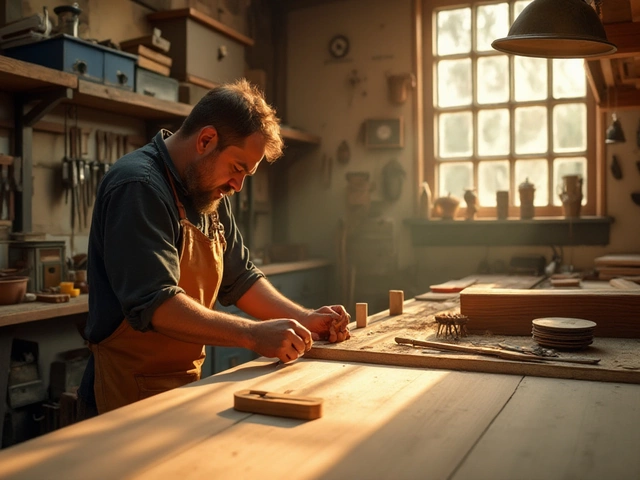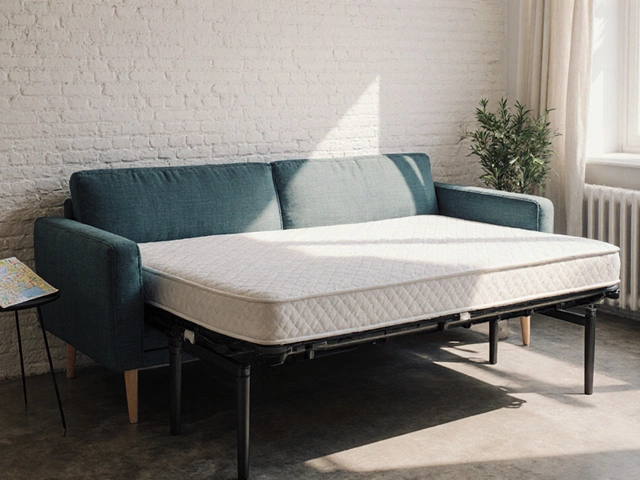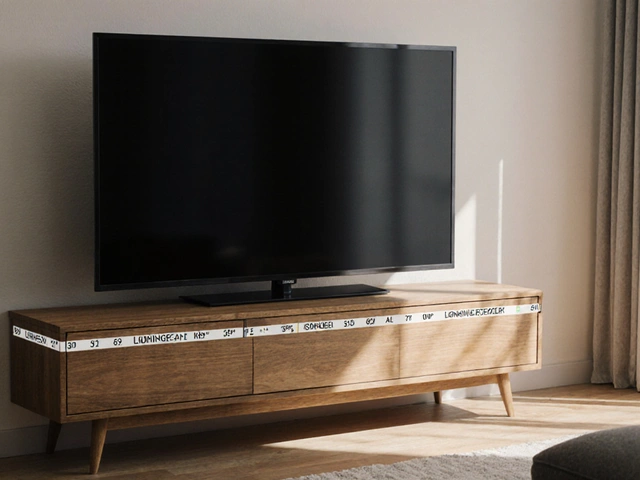Bed bugs, those tiny unwelcome guests, have been notorious residents in our living spaces for centuries. While they usually prefer the warmth and proximity of a bedroom, their adaptability allows them to set up camp in some unexpected places. Enter wicker furniture, a favorite for outdoor lounging, with its charmingly rustic and intricate weaving.
The questions remain: can bed bugs really make themselves at home in your garden's wicker furniture, and if so, what can you do about it? Understanding the interaction between bed bugs and wicker is key to keeping these pests at bay. Let's dive into the facts, dispel some myths, and arm ourselves with knowledge to protect our beloved wicker pieces from these tiny intruders.
- Understanding Bed Bug Behavior
- Wicker Furniture Features
- Common Myths About Bed Bugs in Wicker
- Protecting Your Furniture from Pests
Understanding Bed Bug Behavior
Bed bugs are known as one of the most resilient pests that can plague a home. These tiny creatures, roughly the size of an apple seed, have a unique knack for hiding in the smallest crevices. It’s important to understand that bed bugs are nocturnal. This means they do their feeding at night when their human hosts are asleep. During the day, they retreat into hiding spots. This behavior allows them to often go unnoticed until the infestation has multiplied into hundreds or thousands.
Unlike pests that are drawn to filth or leftovers, bed bugs are purely blood feeders. They are attracted to body heat and carbon dioxide, which makes humans their preferred hosts. Their flattened bodies allow them to hide in tight places such as mattress seams, bed frames, and of course, furniture. Surprisingly, despite their name, they are not exclusive to beds. They can live in couches, chair seams, and even wicker furniture. Their ability to adapt to various environments is why they are often found in unexpected places within a home or even outdoors.
Once they have found a suitable hideout, bed bugs can be challenging to eliminate due to their reproductive capabilities. A single female bed bug can lay hundreds of eggs throughout her lifetime. These eggs are tiny and almost invisible to the naked eye, which allows them to be spread unknowingly. As the infestation grows, they spread out, often leading to severe infestations before they are even detected. The lifecycle of a bed bug from egg to adult is about 5 weeks in ideal conditions, meaning that infestations can grow rapidly if left unchecked.
Pest control experts often emphasize that vigilance and early detection are key in controlling these bugs. It's essential to regularly inspect furniture, even in outdoor settings like the garden. Wicker furniture, with its woven craftsmanship, provides multiple hiding spots, making it a potential target. If suspected, thorough cleaning and possible professional intervention might be necessary to ensure complete eradication.
"Bed bugs aren't limited by material type, and their presence is not indicative of cleanliness; they're opportunistic," says Dr. Robert Jones, an entomologist at the University of Kentucky.
Understanding these behaviors helps in combating the pest. Don’t simply rely on DIY methods like sprays, as improper treatment can spread the bugs further. Knowing when to call in professionals, especially when dealing with unique furniture pieces, is crucial. It's a delicate process where thorough knowledge of bed bug behavior can prevent garden furniture and homes from becoming permanent bed bug residences.
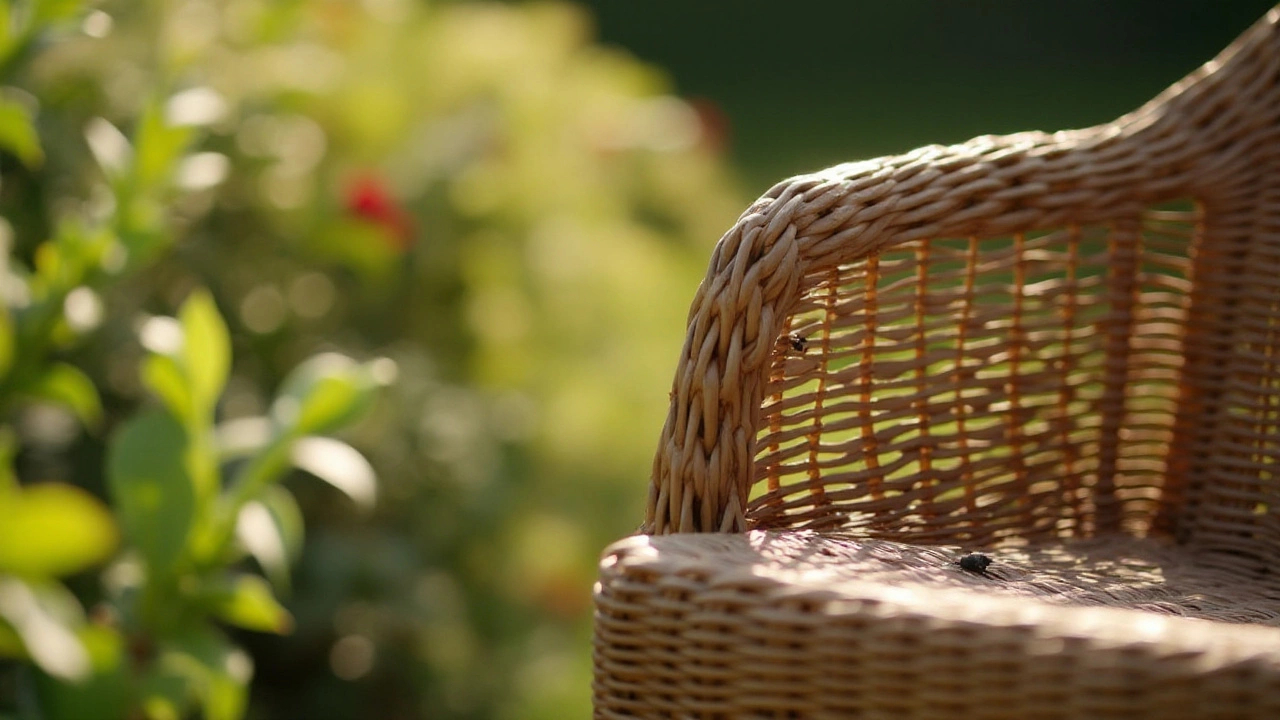
Wicker Furniture Features
Wicker furniture has been a staple in our homes and gardens thanks to its versatile charm and classic appeal. Known for its interlaced design, wicker consists of materials such as rattan, bamboo, or synthetic fibers that are woven into a sturdy framework. This craftsmanship results in a strong yet lightweight structure, capable of supporting substantial weight while providing aesthetic pleasure. The natural gaps formed by the weaving allow for breathability, making this type of furniture ideal for open-air seating. Wicker furniture often graces patios, sunrooms, and even cozy little breakfast nooks.
What’s fascinating about wicker is not just its picturesque appearance but its resilience to various weather conditions. Many modern wicker pieces are treated to withstand sun, rain, and humidity, ensuring a lasting presence in your garden setup. But while the breathability and natural material of wicker serve as advantages in comfort and style, they also present potential drawbacks when it comes to pest infestations. Due to the woven design, the tiny crevices can become ideal hiding spots for pests like bed bugs that thrive in sheltered, dark environments.
It’s important to note that while wicker may seem like an open invitation to pests, manufacturers often integrate pest-resistant features during production. Some pieces are treated with varnishes or coatings that deter insect habitation. Here’s a small insight from furniture expert Jane Doe, "Many people mistakenly believe that all natural wicker spells trouble with pests. However, advances in pest deterrent treatments mean that homeowners can enjoy beautiful wicker pieces without worry."
Sustainable and Eco-Friendly
In addition to aesthetics and durability, wicker furniture is often celebrated for being eco-friendly. Rattan, one of the most commonly used materials in wicker, is a fast-growing plant, making it a sustainable choice for environmentally conscious consumers. The process of weaving and crafting wicker does not typically involve heavy machinery or chemicals, further reducing its carbon footprint.Having an understanding of these features can help homeowners make informed decisions when purchasing wicker furniture, particularly when it comes to maintaining a pest-free environment. Opting for quality craftsmanship and considering treated materials can greatly reduce the risk of unwanted guests such as bed bugs settling in your beautiful garden seating areas.
Material and Design Variability
Wicker furniture comes in an array of materials, each with its own benefits. Natural wicker, made from plant fibers like rattan, willow, or bamboo, is prized for its rustic warmth but requires care in humid or damp environments. Another popular option is resin or synthetic wicker, crafted from durable materials like polyethylene. These are often UV-resistant, making them ideal for sunny gardens.The design variability of wicker furniture also extends to its color and finish. While traditional pieces appear in neutral tones, many homeowners now opt for boldly colored wicker that can withstand outdoor wear and tear while adding vibrant flair. Regular maintenance and cleaning with mild soap help preserve the attractive finish of both natural and synthetic wicker, ensuring that your garden furniture remains a welcoming escape.
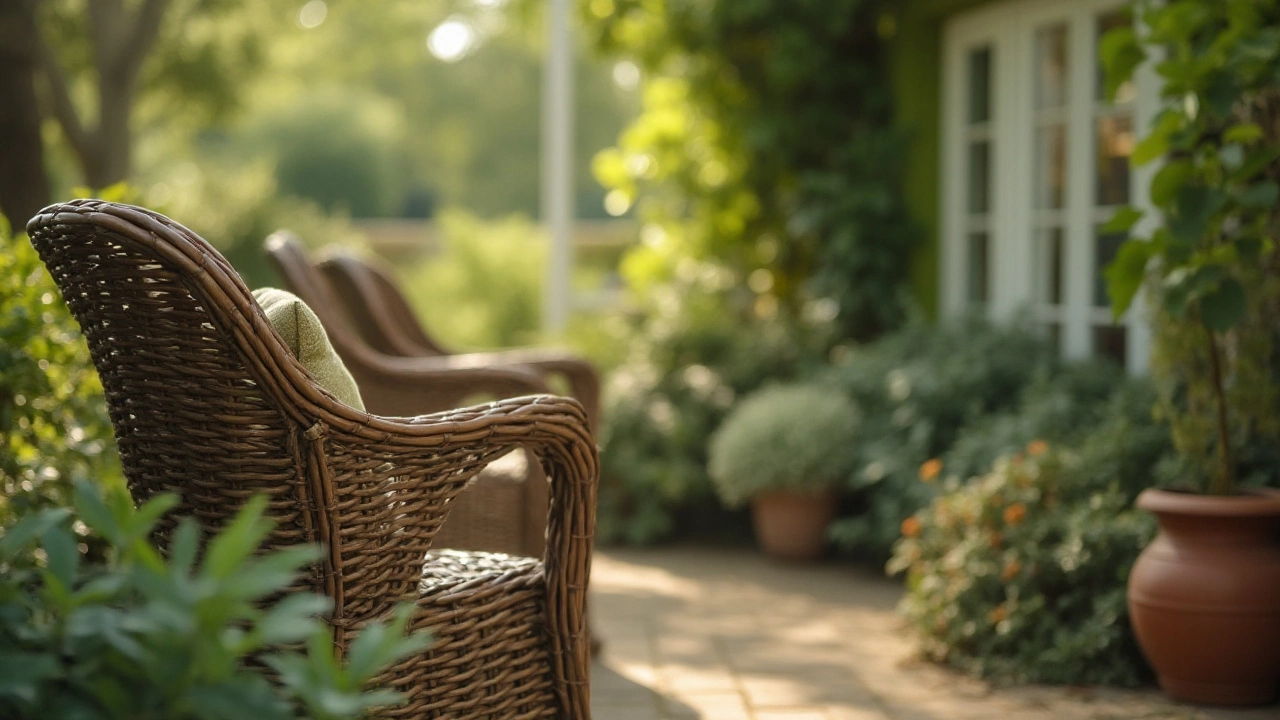
Common Myths About Bed Bugs in Wicker
The world of pest control is rife with myths, especially when it comes to bed bugs and their ability to infest various pieces of furniture. Many folks believe that because wicker furniture features a complex weave, it's a natural magnet for these pests. However, this isn't entirely accurate. Bed bugs are indeed crafty creatures, skilled at hiding in the smallest of crevices, but their choice of home isn't as straightforward. They do have a preference for locations where they can easily access their human hosts and are often found in bedding, luggage, or even behind picture frames.
Another common misconception is that wicker furniture itself attracts bed bugs due to its material. The fact is that bed bugs are not attracted to any particular type of furniture material. They are mainly in pursuit of warmth and the carbon dioxide emitted by humans. In contrast to materials like wood or plastic, wicker’s difficult-to-clean nature doesn't exactly invite these pests, though its texture doesn't repel them either.
Doubt also lingers over the belief that outdoor conditions make wicker furniture less susceptible to infestation. Some think bugs wouldn't survive the elements. This, too, is misleading. Bed bugs are tough survivors and can endure a range of environmental conditions. While they are unlikely to thrive in extreme temperatures for long, a comfortable garden patio can provide a temporary shelter during the warmer months.
To support this information, the National Pest Management Association states, "Bed bugs are hitchhiking experts and don’t discriminate between sanitary and unsanitary conditions."
"It's not about how clean or dirty your environment is. All these pests need is a hiding place and a host,” says Dr. Fredrickson, renowned entomologist at the Urban Insect Lab.
Lastly, there is sometimes a belief that simply discarding infested wicker furniture will eliminate the problem. Unfortunately, this isn't a comprehensive solution because bed bugs could easily have spread elsewhere in your home. It’s paramount to inspect other furniture and use effective pest control measures to fully address the situation. Routine checks and preventive actions, like encasing cushions and vacuuming thoroughly, are crucial steps.
Such myths, while unsettling, emphasize the importance of education and awareness in tackling bed bug issues. By debunking these notions, we lead the way to more informed decisions about pest control and better protection for our beloved garden furniture.
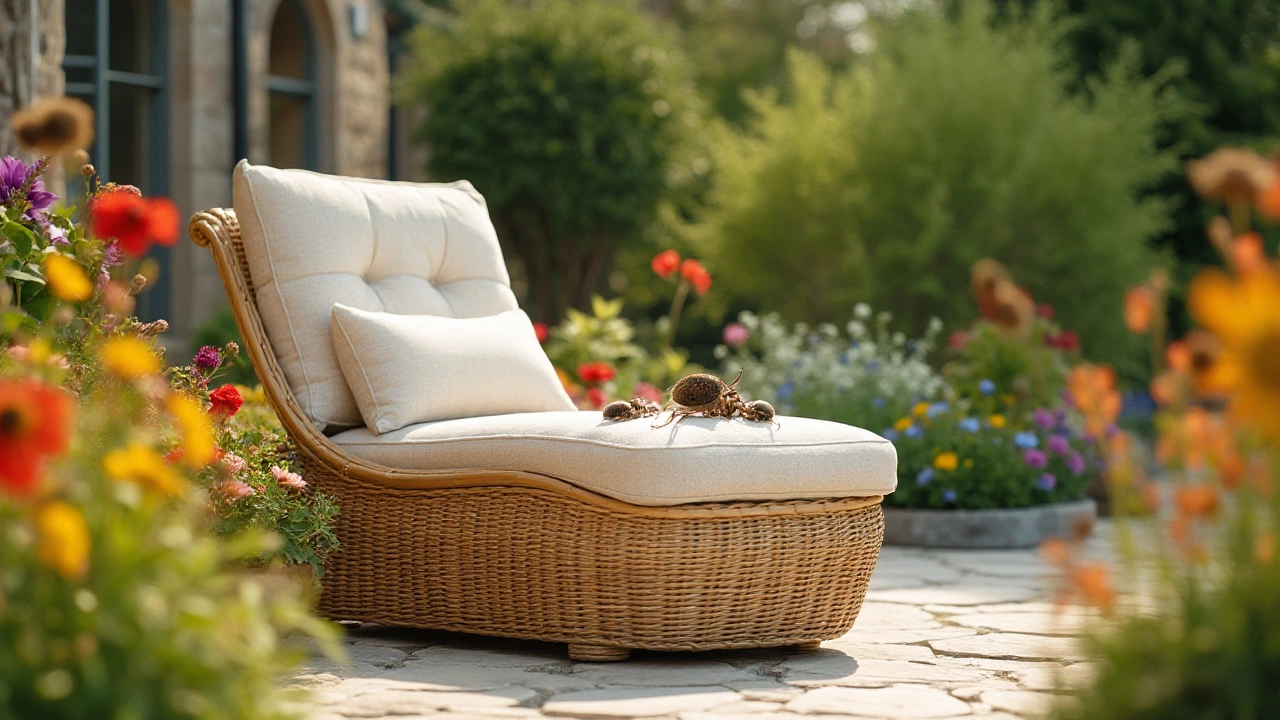
Protecting Your Furniture from Pests
When it comes to safeguarding your furniture from the relentless invasion of pests, especially the infamous bed bugs, a little knowledge and proactive effort can go a long way. These creatures, notorious for their hitchhiking abilities, are often inadvertently brought into homes via luggage, clothing, or used furniture. This means that even your exquisite wicker furniture, with its charming nooks and crannies, could become a potential nesting ground if not properly cared for, particularly in your garden setting where the outdoors provides a plethora of hiding spots.
To keep them at bay, begin by ensuring your home's cleanliness. Regularly vacuum your wicker furniture's cushions and crevices. For extra measure, encase cushions in protective covers that bugs can't penetrate. Weekly inspections of your furniture help detect infestations early, allowing you to promptly address them before they spiral out of control. Safeguarding your spaces by reducing clutter limits bed bugs' breeding possibilities, creating an environment less conducive to their proliferation.
For those serious about creating a pest-free zone, employing a professional pest control service can be highly effective. Many offer treatments specifically targeting stubborn infesters like bed bugs. Professional advice often leads to long-term solutions tailored to your specific environment. As famous entomologist Dr. Micheal Mydlarz once stated,
“Prevention is always more cost-effective and reliable than facing the aftermath of a pest problem.”
Chemical treatments may also be considered, but it's crucial to choose pet- and plant-safe products, especially if your garden furniture resides in outdoor areas. Natural treatments like diatomaceous earth or neem oil offer organic alternatives that fight pests without harming the surroundings. They create protective barriers and disrupt the pest lifecycle, keeping them away without synthetic chemicals. You might find the need to apply them multiple times, as consistency plays a crucial role in their effectiveness.
To boost defense, consider integrating protective designs into your garden landscape. Plants like lavender, which naturally repel bugs, can be strategically placed around seating areas. Introducing beneficial insects such as ladybugs, which prey on pest larvae, can also help keep the natural ecosystem under control. Remember, thriving plants and well-placed companions help create a natural shield around your precious wicker items.
Ultimately, safeguarding your wicker furniture from pests is about balance. By routinely caring for your pieces, adopting clever prevention strategies, and seeking expert advice when needed, you'll maintain a serene and bug-free environment for you and your family to enjoy year-round. With just a little effort and knowledge, those lovely wicker chairs and tables can remain as picturesque and charming as the day they were set up in your garden.
